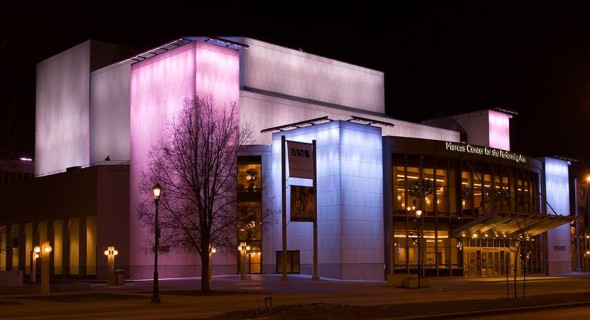Has School Choice Led to Less Arts Funding?
Donations to arts groups have plummeted while giving to education has soared. Why?
The statistic was buried in a recent report by the Public Policy Forum about the growth of non-profits in Milwaukee. It showed that between 1989 and 2011, the percent of all charitable contributions in the metro area going to the arts dropped from 6.5 percent to 3.4 percent, nearly a 50 percent decline. Meanwhile, the share of all charitable donations going to education soared, rising from 3.3 percent to 7.3 percent, an increase of 121 percent.
In short, there has been a remarkable change in the priorities of Milwaukee’s charitable givers. The arts have become far less important and education far more important to them. Giving to the environment also rose significantly, but from a very small base: in 1989 just 0.5 percent of giving went to environmental causes and that tripled, to 1.5 percent by 2011.
Some confirmation of the decline in arts donations can be seen in annual drive by the United Performing Arts Fund. News stories show UPAF raised $5.5 M in 1989, and saw its fund drive jump to $9.5 million by 1999, rising much faster than the rate of inflation. But since then giving has been flat: the group raised just $9.7 M in 2011. UPAF has gradually bumped that up, to $11.7 M in 2014, but in real dollars that is 11 percent below the $9.5 million raised in 1999.
Why the decline? Bill Florescu, general director of the Florentine, says the Great Recession may be one reason. “The arts are going to slide in priority as donors say we’ve got to take care of the primary needs of the community first.”
But the decline in arts funding predates that economic meltdown. “For years leading up to the recession we were flat,” concedes Leigh Lane-Peine, chief marketing officer for UPAF, “and then giving dipped during the recession.”
What’s been happening since 1989 in Milwaukee? A tremendous amount of discussion about the need to improve education, the advent of school choice, and the opening many private schools that get state voucher or charter school funding but also seek private donations. Education has been a hot topic in this metro area, and often times the squeaky wheel gets the grease.
Meanwhile other non-profits arose flying the flag of educational choice and experimentation and seeking donor support. School Choice Wisconsin advocates for more state funding of vouchers.Schools That Can Milwaukee, formed in 2010, works to get support for 22 mostly religious choice and charter schools. Milwaukee Charter School Advocates, also started in 2010, works to provide strategies and resources to support area charter schools. Milwaukee Succeeds, launched in 2011, is a collaborative effort started by the Greater Milwaukee Foundation, which supports strategies to improve all schools — public, private, choice and charter — in the city.
Then there are the local affiliates of national organizations. Teach for America works to recruit recent college graduates to work in low-income schools, and the Milwaukee branch, created in 2009, has a long list of area financial supporters. City Year, a member of the AmeriCorps network, is a program that seeks young volunteers to work with students in public schools to help prevent dropouts and there is now a Milwaukee branch of the program.
Meanwhile, PAVE has a “Board Corps” initiative that “empowers Milwaukee professionals to make a real impact by serving on the boards of high-potential independent schools,” its website notes. “By June 2016, PAVE will have Board Corps members serving on the boards of 70 Partner Schools that successfully educate more than 30,000 students.”
There are now a lot more schools and education organizations in Milwaukee. And that means a lot more competition for donations, says Dan McKinley, executive director of PAVE. He estimates that Schools That Can Milwaukee raised some $3 million last year, while the Milwaukee branch of Teach for America raised $2.5 million. Then there is Milwaukee Succeeds: “It’s taken a lot of money out of the (Greater Milwaukee) Foundation that used to go to schools. They have big staff, big meetings for the organization,” McKinley says.
While the creation of these organizations has increased competition among education groups, it has also meant more competition for all non-profits, including arts groups, seeking donations. A picture of this emerges when you look at giving by the Bradley Foundation.
Back in 1991, its annual reports show it gave nearly $1.2 million to arts groups in the metro area. By 2013, giving in that category had dropped to about $640,000. It was lower that year because the foundation did not fund the Milwaukee Symphony Orchestra, citing concerns about its finances, but in the year previous (2012), the foundation gave about $933,000 to the arts.
In real dollars that $1.2 million given in 1991 would have been worth $2 million by 2013, meaning the foundation’s current level of giving to the arts of about $933,000 has dropped by a little more than $1 million, or more than 50 percent. That huge decline came despite the foundation’s total assets nearly doubling during this period, growing from about $360 million to $640 million.
What was funded instead? The short answer is that the Bradley Foundation is a very ideological organization that looks to make strategic grants to move this country to the right. From the beginning of the school choice movement the foundation has been perhaps its foremost champion, and has spent heavily to support its growth. If anything, it has become even more ideological under the leadership of uber-conservative power broker Michael Grebe, who took over as its president and CEO in 2002.
The foundation’s giving in 2013 included $100,000 for City Year, $225,000 for PAVE, $300,000 for School Choice Wisconsin, $100,000 for Schools That Can Milwaukee and $75,000 for Milwaukee Charter School Advocates. That adds up to $800,000.
But there are also individual choice schools the foundation gives to, and other organizations nationally that advocate for choice and charter schools. A study by the National Committee for Responsive Philanthropy estimated that from 2002 to 2006, there were “1,212 distinct foundations giving grants to 104 of the 132 identified school choice organizations.” The leader was the Walton Family Foundation, which gave $25.3 million in 2005 to school choice organizations, and the Bradley Foundation was second with $6.4 million in donations.
Other foundations in Milwaukee are not as ideological, and are unlikely to give to groups like School Choice Wisconsin. But they may be giving to some of the individual schools created as part of the explosive growth of charter and choice schools. And they may be giving to groups like Schools That Can Milwaukee, Teach for America or Milwaukee Succeeds.
Nationally the school choice movement has been something of an earthquake, but its undoubted epicenter is Milwaukee, Wisconsin. The reverberations, it appears, are being felt — and quite powerfully — by the city’s long vaunted arts scene.
Murphy's Law
-
The Last Paycheck of Don Smiley
 Dec 17th, 2025 by Bruce Murphy
Dec 17th, 2025 by Bruce Murphy
-
Top Health Care Exec Paid $25.7 Million
 Dec 16th, 2025 by Bruce Murphy
Dec 16th, 2025 by Bruce Murphy
-
Milwaukee Mayor’s Power in Decline?
 Dec 10th, 2025 by Bruce Murphy
Dec 10th, 2025 by Bruce Murphy























Funding the arts is extremely important, but education > arts. An increase in donations to education programs trumps all in my book as it is one of the most important challenges our city faces (and is also the best way to pull people out of poverty).
I can’t comment on choice schools directly affecting donations to the arts unless I see actual proof, not just data on funding levels by one institutional philanthropic organization. Regardless, this shows people are putting resources towards the areas that need it most (while not directly commenting on whether the money is used well).
Education is always an area that is underfunded and looking for additional funding. Charter programs and voucher schools are able to bring private foundation money to education in a way that public schools never could.
You also document the rise of giving to voucher programs in the 90s, starting with PAVE, but that period coincided with the above inflation growth of the arts funding. An alternative explanation is that the late 90s were an anomaly in arts funding. The long term average of arts fund growth since 1989 has been 4.5%, significantly above the average inflation of 2.76% over that period.
School funding has risen at three times the rate of inflation since 1960 when we did better job of education. Education spending is not the problem. Private schools did better job at half the cost. One room schools actually did better job of basics. Schools throughout world do better job of teaching then we do for less money.
Our problem has been the unions who were only interested in money and job rules, according to Al Shanker and the federal involvement. These things removed parent and community from the process.
When we have taught all of the kids to read then we must worry about arts.
Wondering if by arts funding you mean funding big art groups (Symphony, Ballett, Opera, and the Art Museum). That may be true, but they are also part of the problem with arts funding in Milwaukee if you are thinking of the more progressive art forms that arise from our contemporary world.
The Public Policy Forum doesn’t specify but my impression is it includes all arts groups. In the case of the Bradley Foundation it has always given a very high percentage of its arts donations to the big groups. Of course, long-term changes in giving to the arts would always be driven by the groups you mention, plus the Milwaukee Rep, because their budgets are so big.
From the Department of Clarification and Amplification at PAVE: In my quick conversation with Bruce I offered to meet to discuss the topic of philanthropic funding of education in detail because it really is a question of what donors are trying to accomplish and whether there is evidence of positive impact. The fundamental context for me is the recent report from the Annie E. Casey Foundation, “Race for Results: Building a Path to Opportunity for All Children,” that shows how Wisconsin is the worst state “to prepare black children for educational and financial success.” Schools must change. That is why philanthropists are funding change organizations like PAVE, Schools That Can, and Teach for America, and holding us accountable for the results of our work.
The clarification is about what I was quoted as saying about the biggest organization taking on changing the way things work for Milwaukee’s children: Milwaukee Succeeds. It has to be large because it is bringing together everyone to concentrate on the essential measures of what needs to change and why–and reporting on results for every school. It does not have a large staff, however: Mike Soika is an old friend and he has not put on any weight over the years. And he has only one or perhaps one-and-a-half assistants. This organization’s impact is far greater than its budget might indicate.
Bruce has once again tipped up an important topic, and I look forward to getting together for a good conversation about what really is bringing about productive changes in the education of Milwaukee’s children–so they do not have to grow up in the most difficult environment in the country.
Carville used to say: “It’s the economy stupid”. At MPS we can say the same thing only different: “Teach them to read Stupid”. They do it throughout the world except at MPS.